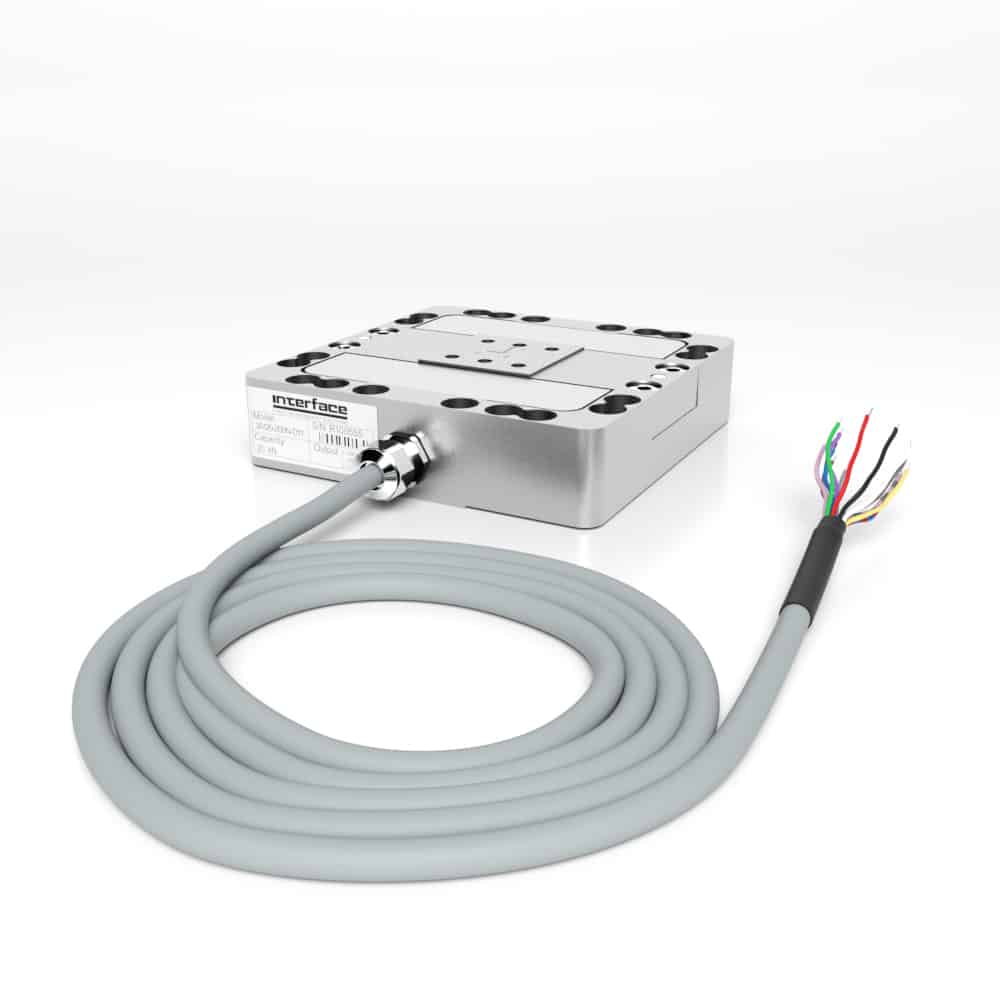Interface offers a wide variety of load cells, torque transducers and signal conditioners to collect the data medical OEMs worldwide need to both optimize a medical solution and prove safety, reliability and functionality to governing bodies. Because of the small and precise loads tested in the medical industry, we offer a broad lineup of Interface Mini™ Load Cells and accessories are available for capacities as low as 0.11 lbf / 0.5 N and as high as 100 kN. We also offer custom solutions for unique product development projects. In addition, Interface is ISO17025 accredited – the main ISO standard used by testing and calibration laboratories.
In another medical application, Interface supplied products to help our customer test how a prosthetic foot responds as it is loaded during different stances. Interface Model 3A120 3-Axis Load Cell was installed between the leg socket and the prosthetic foot. Model 3A120 was then connected to customer’s portable data acquisition system. Data was logged for X, Y, and Z axis, so that a review of results could identify premature foot flat and dead spots during foot’s use. The testing help to identify improvements to the design and overall performance of the prosthetic.
Another medical application relying on force measurement equipment are plasma separation machines. Interface’s MBS low-capacity aluminum bending load cell is being used in plasma separation machines which must be calibrated for every patient in order to collect the right amount of plasma. The machine separates the blood in a centrifuge and a saline solution is pumped back into the patient. There are two load cells in each plasma separation machine, and they play a vital role in ensuring the accuracy of the process.
Prosthetics, like those used in knees, hips, and joint replacements, also test for strength, fatigue and stress using Interface load cells and torque transducers. One of the unique ways they’re designed is by testing force measurement products on cadavers and using that data to emulate human joints. When completed, the prosthetics then go through multiple cycles of stress tests to ensure they will hold up for extended periods of use. This process is carried out using multiple load cells and torque transducers, which are hooked up to a test rig.




